The importance of mobile apps for restaurants in today’s mobile-centric environment cannot be emphasized. These apps play a crucial role in catering to the evolving needs and preferences of customers while providing unparalleled convenience and a personalized dining experience.
With mobile apps, restaurants can effortlessly reach their tech-savvy customers who rely on their smartphones for almost everything. By offering a dedicated app, restaurants enable customers to access their services at their fingertips, anytime and anywhere. Whether it’s making reservations, ordering food for delivery or pickup, or browsing menus and promotions, mobile apps simplify the entire process and eliminate the hassle of traditional methods.

Benefits of Mobile Apps for Restaurants
Having a mobile app for a restaurant brings numerous advantages that foster customer engagement, operational efficiency, brand loyalty, and expanded reach. Let’s explore these benefits –

A. Increased Customer Engagement
A mobile app provides a direct and interactive channel for restaurants to engage with their customers. Through push notifications and personalized offers, restaurants can keep customers informed about new menu items, special promotions, or upcoming events. By fostering regular communication, the app creates a sense of familiarity and connection, making customers feel valued and engaged with the restaurant’s offerings.
B. Improved Efficiency
Mobile apps streamline various aspects of the dining experience, making it more efficient for both customers and restaurant staff. With only a few clicks on their mobile devices, customers can simply explore menus, customize orders, and book reservations. This saves time and reduces the chances of order errors. Additionally, features like in-app payments and digital receipts minimize wait times and eliminate the need for manual transactions, enhancing overall operational efficiency.
C. Enhanced Brand Loyalty
A mobile app enables restaurants to build stronger relationships with their customers, fostering brand loyalty. By offering exclusive rewards, loyalty programs, or personalized recommendations based on customer preferences, the app creates a sense of appreciation and personalized attention. As a result, there are more chances that customers will return and spread good word of mouth about the restaurant, cultivating a loyal customer base that feels appreciated and linked to the restaurant’s brand.
D. Ability to Reach a Wider Audience
With a mobile app, restaurants can extend their reach beyond their physical location. By leveraging app stores and online platforms, they can tap into a wider audience base, including potential customers who may not have discovered them otherwise. Moreover, the app allows restaurants to attract tourists or visitors who are searching for dining options in the area, expanding their customer base and boosting revenue potential.
Key Features and Functionality
A restaurant mobile app should offer a range of essential features and functionalities to enhance the overall dining experience for customers. Let’s look into some key features that make a restaurant app truly valuable.
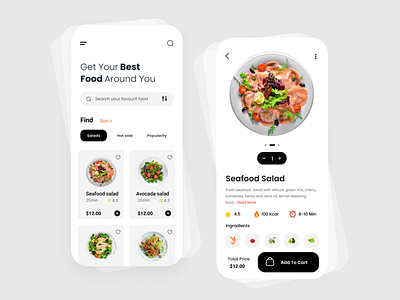
A. Menu Browsing
Direct order placement through the app is a feature that is essential. They should be able to customize their orders, select options such as toppings or sides, and specify delivery or pickup preferences. Seamless integration with payment gateways ensures a smooth and secure transaction process.
B. Online Ordering
To improve the loading speed of your website on mobile devices, optimize your images. Compress images without compromising quality to reduce file size. Use the appropriate image formats (such as JPEG or WebP) and specify image dimensions to ensure proper scaling on different devices. This helps to minimize load times and improve user experience.
C. Reservation Management
A restaurant app should enable customers to make reservations effortlessly. By offering a simple interface for selecting preferred date, time, and party size, customers can easily secure a table. Real-time availability updates and confirmation notifications provide a sense of assurance and convenience.
D. Loyalty Programs
Implementing a loyalty program within the app can incentivize customer loyalty and repeat visits. Rewarding customers with points, discounts, or exclusive offers based on their order history or frequency of visits fosters a sense of appreciation and encourages them to choose the restaurant over competitors.
E. Push Notifications
Push notifications serve as a powerful tool to engage with customers. Restaurants can utilize notifications to share special promotions, limited-time offers, or new menu additions, keeping customers informed and enticed. Personalized notifications based on customer preferences or location can enhance the relevance and effectiveness of these messages.
F. Analytics
Including analytics capabilities in the app allows restaurants to gather valuable insights about customer behavior and preferences. Tracking data such as popular menu items, order patterns, or peak dining hours helps in making informed business decisions and tailoring marketing strategies to better serve customer needs.
User-Friendly Interface and Seamless Experience
A user-friendly interface is of utmost importance in a restaurant mobile app as it significantly impacts the overall experience of customers. Let’s dive deep into the key aspects that make a user-friendly interface essential

A. Intuitive Navigation
Customers may simply find what they’re looking for without any difficulty or aggravation thanks to an app with straightforward navigation. Clear and logical menu structures, categorized sections, and easily accessible features make it effortless for users to browse menus, place orders, make reservations, or access loyalty programs. Intuitive navigation saves time, reduces friction, and enhances customer satisfaction.
B. Visually Appealing Design
A visually appealing design captivates users’ attention and creates a positive impression of the restaurant’s brand. Well-thought-out color schemes, appealing typography, and high-quality images of food and ambience enhance the app’s aesthetic appeal. Customers are more likely to interact with the app and explore its features when it has an appealing design since it conveys professionalism and attention to detail.
C. Fast Loading Times
In today’s fast-paced world, users have little patience for slow-loading apps. A restaurant app should prioritize fast loading times to provide a seamless experience. Swift response to user interactions, quick loading of menus and images, and efficient data retrieval contribute to a smooth user experience. Fast loading times not only improve customer satisfaction but also prevent users from abandoning the app in favor of faster alternatives.
D. Seamless User Experience
A seamless user experience is crucial for retaining users and encouraging them to interact with the app regularly. Every interaction within the app, from placing an order to redeeming loyalty rewards, should feel effortless and straightforward. A seamless flow that maintains users’ interest and satisfaction is created by reducing the amount of steps necessary to complete tasks, offering clear instructions, and guaranteeing smooth transitions between displays. Intuitive navigation, visually appealing design, fast loading times, and a seamless user experience combine to create an app that customers enjoy using.
Menu and Online Ordering Integration
Integrating the menu and online ordering system within a restaurant mobile app holds immense significance as it brings remarkable benefits to customers, providing them with a convenient and delightful dining experience. Let’s explore why this integration is so valuable in an attractive and engaging manner
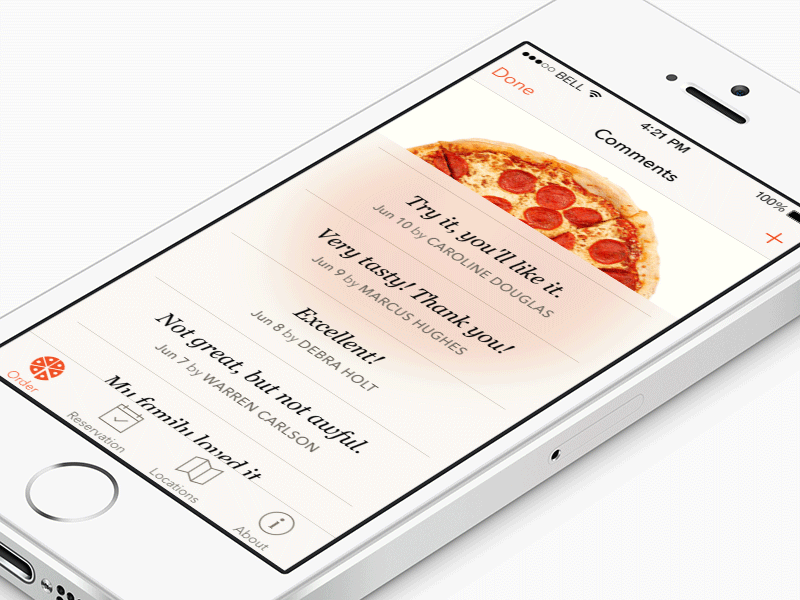
A. Effortless Menu Exploration
Imagine having the entire restaurant menu at your fingertips, easily accessible with just a few taps on your mobile device. By integrating the menu within the app, customers can effortlessly browse through an enticing array of dishes, accompanied by mouthwatering descriptions and captivating visuals. Customers may explore the menu at their own pace thanks to this immersive experience, whetting their hunger and piquing their interest.
B. Customized Orders Made Simple
The integration of an online ordering system empowers customers to tailor their orders according to their preferences. Whether it’s choosing toppings, requesting special instructions, or adjusting portion sizes, the app provides a user-friendly interface to customize orders with ease. This flexibility ensures that customers can have their meals prepared exactly as they desire, delivering a personalized dining experience.
C. Seamless Payment Process
The convenience of making payments directly through the app is a game-changer for customers. With secure and integrated payment gateways, customers can settle their bills effortlessly without the need for cash or physical cards. This streamlined process saves time, eliminates the hassle of waiting for the check, and offers a seamless transition from selecting dishes to completing the transaction. The peace of mind that comes with a secure and hassle-free payment experience adds to the overall satisfaction of customers.
D. Time-Saving Convenience
By integrating the menu and online ordering system, the app provides a remarkable level of convenience for customers. They can do everything from the convenience of their own smartphone, including browsing the menu, customizing their orders, and finishing the transaction in a matter of minutes. This time-saving feature is especially valuable for customers on the go, those with busy schedules, or those seeking a quick and efficient dining experience.
E. Enhanced Order Accuracy
Integrating the menu and online ordering system helps minimize order errors. By allowing customers to directly input their preferences and requirements, the chances of miscommunication or misunderstandings between customers and staff are significantly reduced. This ensures that customers receive the exact dishes they desire, improving overall order accuracy and customer satisfaction.
Table Reservation and Waitlist Management
Incorporating table reservation and waitlist management features in a restaurant mobile app brings several advantages, making the dining experience smoother and more convenient for customers. Let’s explore the benefits of these features and how they enhance the reservation process
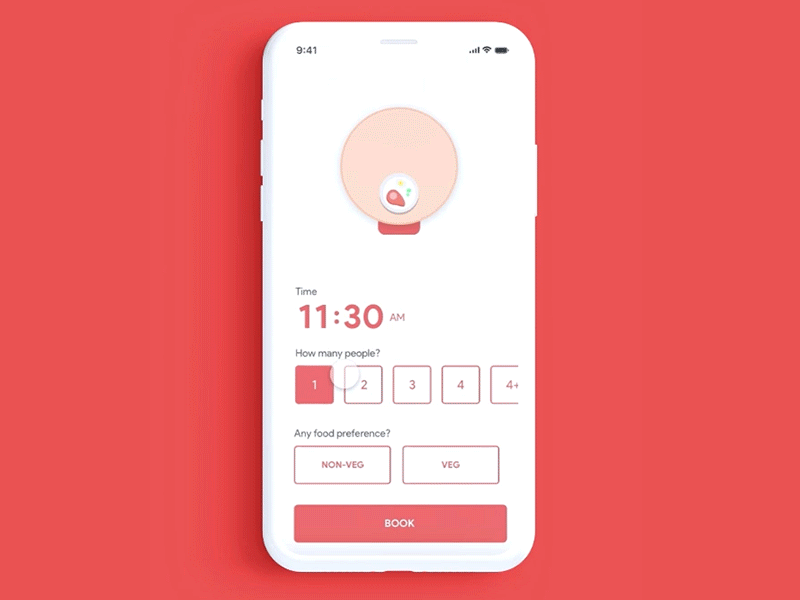
A. Ease of Table Booking
By integrating table reservation functionality in the mobile app, customers can effortlessly book a table at their preferred date and time. With a user-friendly interface, customers can select the desired party size, specify any special requirements, and quickly secure their reservation. This eliminates the need for phone calls or physically visiting the restaurant to make a reservation, providing a hassle-free booking experience.
B. Joining the Waitlist
In busy periods or peak hours, it’s common for restaurants to have a waitlist for customers who don’t have an immediate table available. Customers can quickly add themselves to the queue by adding a few touches to the app’s waitlist management feature. This saves time and avoids standing in crowded waiting areas, providing a more comfortable and convenient experience.
C. Real-Time Reservation Updates
Giving clients real-time updates on the status of their reservations is one of the mobile app’s key benefits. Customers can receive notifications about the progress of their reservation, such as confirmation, table readiness, or any delays. These real-time updates keep customers informed and manage their expectations, reducing uncertainty and improving overall satisfaction.
D. Efficient Table Turnover
Table reservation and waitlist management features in the app enable restaurants to optimize their table turnover. By accurately managing reservations and waitlists, restaurants can estimate wait times, allocate resources effectively, and ensure a smooth flow of customers. This improves operational efficiency, minimizes customer wait times, and enhances the overall dining experience.
E. Personalized Customer Experience
By integrating reservation and waitlist management features with customer profiles in the app, restaurants can offer a personalized experience. Restaurants can track customer preferences, previous visits, or special occasions, allowing them to provide tailored service and personalized recommendations. This level of personalization creates a more memorable and delightful dining experience, fostering customer loyalty and repeat visits.
Loyalty Programs and Customer Engagement
Mobile apps play a crucial role in helping restaurants implement effective loyalty programs, enabling them to cultivate customer loyalty, drive engagement, and foster long-term relationships. Here are the key benefits of utilizing mobile apps for loyalty programs
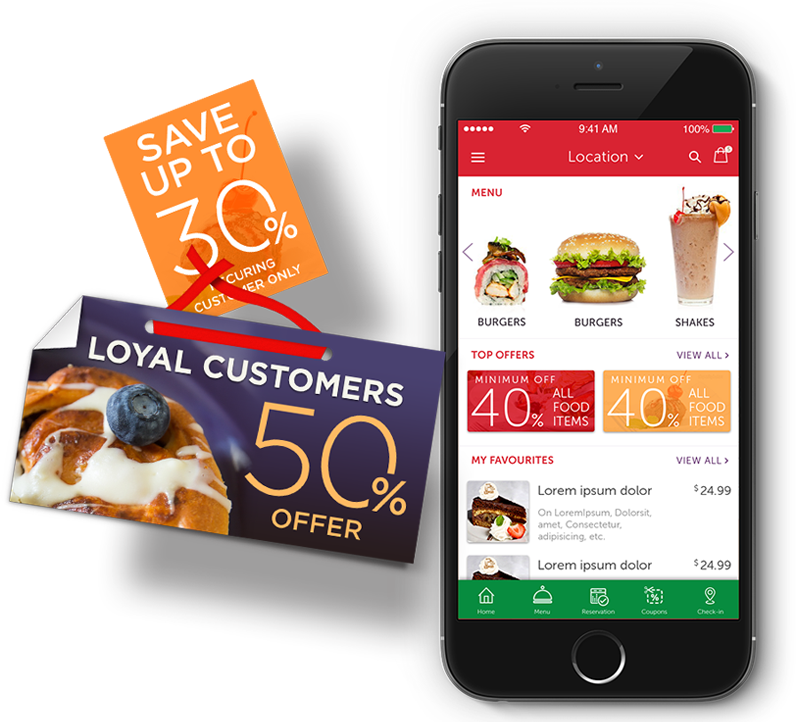
A. Rewarding Loyal Customers
Mobile apps allow restaurants to identify and reward their loyal customers. By tracking customer behavior, order history, or frequency of visits, the app can assign loyalty points or tiers to customers based on their engagement. Rewarding loyal customers with exclusive perks, such as discounts, free items, or special offers, creates a sense of appreciation and encourages them to continue choosing the restaurant over competitors.
B. Exclusive Discounts and Offers:
Mobile apps provide an ideal platform for delivering exclusive discounts and offers to loyal customers. By targeting these offers specifically to app users, restaurants can create a sense of exclusivity and make customers feel valued. Offering personalized promotions or time-limited deals through the app incentivizes customers to engage with the loyalty program and increases their likelihood of making repeat visits.
C. Encouraging Engagement through Gamification
Gamification elements within a mobile app’s loyalty program can significantly enhance customer engagement. By incorporating challenges, milestones, or progress tracking, restaurants can create a fun and interactive experience for customers. This gamified approach motivates customers to earn more rewards, unlock achievements, or compete with friends, resulting in increased app usage, repeat visits, and strengthened loyalty.
D. Data-driven Insights
Mobile apps provide valuable data and insights that help restaurants refine their loyalty programs. By analyzing customer behavior, preferences, and redemption patterns, restaurants can gain valuable insights into their customers’ preferences, dining habits, and overall satisfaction. These insights can be used to tailor promotions, improve targeted marketing campaigns, and make informed business decisions to better serve customers and drive loyalty.
E. Enhanced Customer Engagement and Communication
Mobile apps facilitate direct and personalized communication channels between restaurants and customers. Push notifications can be used to update customers about their loyalty status, upcoming promotions, or special events. The app can also serve as a platform for seeking customer feedback, conducting surveys, or inviting customers to participate in contests or loyalty program-related events. This two-way communication fosters a sense of engagement, builds stronger relationships, and encourages ongoing customer loyalty.
Push Notifications and Personalized Offers
Push notifications wield significant power in driving customer engagement and boosting app usage for restaurants. They offer a direct and personalized way to deliver offers and promotions to app users, keeping them informed, motivated, and incentivized. Let’s explore the key advantages of push notifications in this context

A. Personalized Offers and Promotions
Push notifications enable restaurants to deliver tailored offers and promotions directly to app users. By analyzing user data and preferences, restaurants can send personalized notifications that align with customers’ interests and past behaviors. For example, if a customer frequently orders vegetarian dishes, the app can send a notification with a special discount on new vegetarian menu items. This personalization adds value to the customer’s experience and increases the likelihood of engagement.
B. Real-Time Updates
Users of the app receive push alerts in real time, keeping them updated on breaking news, events, or limited-time promotions. Whether it’s announcing a limited-time discount, promoting a special menu for the day, or informing customers about upcoming events, push notifications deliver information directly to the user’s device, ensuring timely and relevant communication. Real-time updates create a sense of urgency and excitement, motivating customers to take immediate action.
C. Increased App Usage
Push notifications serve as a gentle reminder for app users to engage with the restaurant’s mobile app. By sending periodic notifications with enticing offers, loyalty program updates, or new menu additions, restaurants can encourage users to open the app, explore its features, and make use of its functionalities. Regular app usage strengthens customer engagement, keeps the restaurant top-of-mind, and increases the chances of repeat visits.
D. Enhanced Customer Retention
Through personalized push notifications, restaurants can nurture customer loyalty and retention. By offering exclusive promotions, rewards, or personalized messages of appreciation, push notifications make customers feel valued and appreciated. This proactive strategy improves the rapport between the restaurant and the client, encouraging long-term loyalty and lowering the possibility that clients may patronize rival businesses.
E. Targeted Marketing Campaigns
Push notifications allow restaurants to conduct targeted marketing campaigns directly within the app. By segmenting the customer base based on various criteria such as preferences, order history, or location, restaurants can send notifications that are highly relevant to specific customer groups. This level of targeted marketing increases the effectiveness of promotions, as customers receive notifications that align with their interests, leading to higher conversion rates and engagement.
Online Payments and Secure Transactions
Ensuring secure online payments within a restaurant mobile app is of paramount importance to protect both the customers and the business. Let’s explore why secure online payments are crucial and discuss the key aspects that contribute to their implementation

A. Trust and Confidence
In an era of digital transactions, customers prioritize the security of their financial information. By integrating trusted payment gateways within the app, restaurants instill confidence in their customers, assuring them that their payment details are handled securely. Working with reputable payment providers establishes trust and demonstrates the restaurant’s commitment to safeguarding sensitive information.
B. Encryption and Data Protection
To secure online payments, encryption methods play a vital role. Data transmission between the app and the payment gateway should be encrypted using industry-standard encryption protocols. This encryption ensures that customer payment information remains confidential and protected from unauthorized access.
C. Compliance with Data Security Standards
In order to ensure the secure handling of consumer data, restaurants must abide by data security standards and legislation. Compliance with standards like the Payment Card Industry Data Security Standard (PCI DSS) is crucial. This involves implementing measures such as maintaining a secure network, regularly monitoring and testing systems, and maintaining an information security policy. Compliance demonstrates the restaurant’s commitment to data security and provides customers with peace of mind.
D. Tokenization and Secure Storage
To further enhance security, sensitive payment information should not be stored within the app or the restaurant’s servers. Instead, a tokenization process can be employed. Tokenization replaces the actual payment card details with a unique identifier or “token.” This ensures that even if a breach occurs, the customer’s payment information remains secure as the token holds no intrinsic value. Storing tokens instead of actual payment details reduces the risk of data theft.
E. User Education and Transparency
Restaurants should prioritize user education and transparency regarding their payment security measures. Clearly communicating the security features and steps taken to protect customer data within the app creates a sense of transparency and helps customers feel informed and reassured. Providing FAQs, security information, or support channels related to payment security allows customers to seek clarification and build trust in the app’s payment system.
Analytics and Insights
A mobile app’s analytics and insights can enable restaurants to make data-driven decisions and streamline their processes improving the entire customer experience. Let’s explore how leveraging app analytics can drive improvements in various aspects of a restaurant’s operations

A. Tracking App Usage
App analytics provide valuable insights into how customers interact with the mobile app. Restaurants can track metrics such as the number of downloads, active users, session durations, and popular app features. Understanding app usage patterns helps identify areas of improvement, optimize user flows, and enhance the overall user experience. For example, if a particular feature is rarely used, it can be refined or replaced with more valuable functionality.
B. Understanding Customer Behavior
App analytics enable restaurants to gain deep insights into customer behavior and preferences. By tracking actions within the app, such as menu browsing, order history, or loyalty program engagement, restaurants can understand customers’ preferences, their favorite menu items, or their dining habits. This data can drive personalized recommendations, targeted marketing campaigns, and menu optimizations to cater to customers’ preferences and enhance their overall experience.
C. Identifying Popular Menu Items
App analytics can help identify the most popular menu items among customers. By tracking order history and analyzing customer preferences, restaurants can determine which dishes are frequently ordered and highly rated. This insight allows them to optimize their menu offerings, highlight popular items, and even experiment with new dishes based on customer preferences. By aligning the menu with customer preferences, restaurants can increase customer satisfaction and drive revenue.
D. Optimizing Operations
App analytics provide valuable data that can be used to optimize various aspects of restaurant operations. For instance, analyzing peak ordering hours and average order processing times can help restaurants streamline their kitchen operations and allocate staff efficiently. Insights into customer behavior, such as preferred dining times or popular add-ons, can guide inventory management and ensure that sufficient ingredients are available when needed. By leveraging data to make informed decisions, restaurants can enhance operational efficiency, reduce costs, and deliver a seamless dining experience.
E. Continuous Improvement
App analytics enable restaurants to track the impact of changes and improvements made to the app or operations. By monitoring key metrics before and after implementing changes, restaurants can assess the effectiveness of their strategies and make data-driven adjustments. This iterative approach to improvement helps refine the app’s features, optimize the customer experience, and ensure that the restaurant stays aligned with evolving customer preferences and market trends.
Customization and Branding
Customizing the mobile app to align with the restaurant’s branding is of utmost importance as it helps create a consistent and immersive brand experience for customers. Here’s why customization is essential and the key elements that can be tailored to reinforce the restaurant’s brand identity.
A. Brand Recognition and Consistency
Customizing the mobile app allows restaurants to reinforce their brand identity and promote brand recognition. By incorporating the restaurant’s logo, typography, and visual elements consistently throughout the app, customers can easily associate the app with the restaurant and its unique offerings. Consistency in branding builds trust, familiarity, and loyalty among customers.
B. Logo Placement
Placing the restaurant’s logo prominently within the mobile app is crucial for brand visibility and recognition. The logo should be positioned in a strategic area, such as on the app’s splash screen, home screen, or header, to guarantee that it is easily visible and recognized by users. A well-placed logo reinforces the restaurant’s visual identity and establishes a strong brand presence.
C. Color Schemes
Customizing the color scheme of the mobile app to align with the restaurant’s brand colors is essential for visual cohesion. The app’s color palette should reflect the restaurant’s established brand colors to create a seamless and immersive experience. Consistent use of colors evokes emotions, reinforces brand association, and contributes to a cohesive brand identity.
D. Visual Elements and Imagery
Integrating visual elements and imagery that align with the restaurant’s brand identity is crucial for creating an engaging and immersive app experience. This can include using high-quality food photography, illustrations, or graphics that reflect the restaurant’s cuisine, ambiance, or unique selling points. Visual elements should be in line with the brand’s style guide, ensuring a consistent visual language across all touchpoints.
E. Typography and Fonts
Selecting appropriate typography and fonts that align with the restaurant’s brand personality is vital for conveying a cohesive visual identity. Whether it’s a modern, elegant, or playful aesthetic, the chosen typography should reflect the brand’s character and be legible on different device screens. Consistency in font usage throughout the app creates a harmonious and recognizable brand experience.
F. User Interface (UI) Design
Customizing the app’s user interface (UI) design to align with the restaurant’s branding enhances the overall user experience. This can involve incorporating design elements, such as buttons, icons, and navigation menus, that reflect the restaurant’s brand aesthetic. Consistent visual styling across the app’s UI fosters familiarity, makes the app intuitive to navigate, and reinforces the overall brand experience.
Marketing and Promotion
Mobile apps play a crucial role in marketing and promoting restaurants by offering a range of features that enhance visibility, engage customers, and foster brand loyalty. Let’s explore how mobile apps contribute to restaurant marketing and promotion:

A. In-App Promotions
Mobile apps provide a platform for restaurants to offer exclusive in-app promotions to their customers. These can include special discounts, limited-time offers, or loyalty rewards accessible only through the app. In-app promotions incentivize customers to download the app, create a sense of exclusivity, and drive engagement by encouraging users to explore the app regularly for the latest offers.
B. Referral Programs
Mobile apps offer a convenient platform for implementing referral programs, where customers are rewarded for referring friends or family to the restaurant. Through the app, customers can easily refer others, share referral codes, and track their rewards. Referral programs not only encourage word-of-mouth marketing but also foster a sense of community and reward loyal customers for their advocacy.
C. User Reviews and Ratings
Mobile apps enable customers to provide feedback, write reviews, and rate their dining experiences directly within the app. This feedback serves multiple purposes. Firstly, it allows customers to share their opinions, which can help improve the restaurant’s offerings and services. Secondly, positive reviews and high ratings act as social proof, influencing potential customers to choose the restaurant. User reviews and ratings within the app contribute to building credibility, enhancing the restaurant’s online reputation, and driving customer trust.
D. Push Notifications for Promotions
Mobile apps leverage push notifications to deliver targeted promotions, offers, and updates directly to app users. Restaurants can send personalized notifications based on user preferences, order history, or location to drive engagement and prompt customers to take action. Push notifications are highly effective in keeping customers informed about upcoming events, new menu additions, or time-sensitive promotions, increasing the likelihood of customer engagement and repeat visits. Mobile apps offer a convenient platform for implementing referral programs, where customers are rewarded for referring friends or family to the restaurant. Through the app, customers can easily refer others, share referral codes, and track their rewards. Referral programs not only encourage word-of-mouth marketing but also foster a sense of community and reward loyal customers for their advocacies.
E. Social Media Integration
Integrating social media within the mobile app enables seamless sharing of experiences and promotions. Customers can easily share their favorite dishes, dining experiences, or exclusive offers with their social media networks directly from the app. This integration expands the restaurant’s reach, increases brand visibility, and harnesses the power of user-generated content for organic promotion.
Customer Support and Feedback
Mobile apps have the potential to greatly enhance customer support and facilitate feedback collection, providing a seamless and convenient way for customers to seek assistance and share their experiences. Here’s how mobile apps can elevate customer support and feedback collection
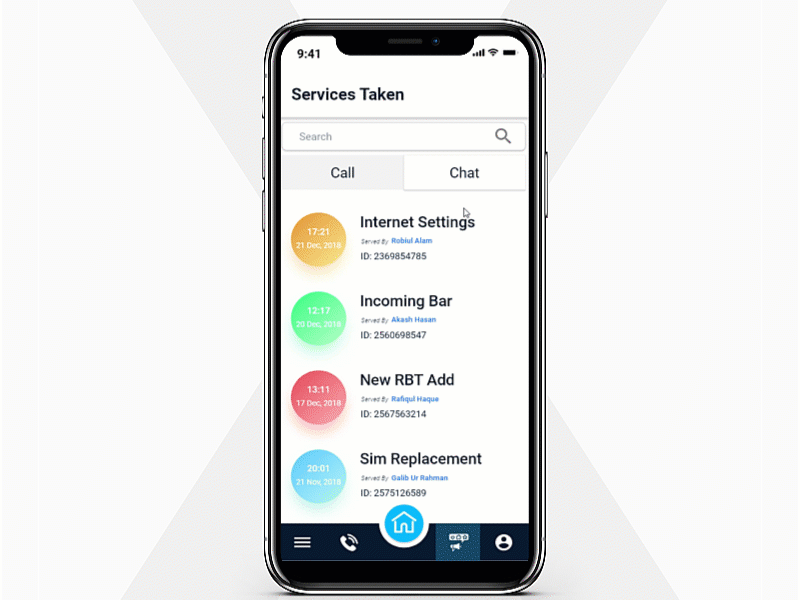
A. Live Chat Support
Customers can communicate with customer service agents in real-time with live chat features that can be integrated into mobile apps. This instant communication channel enables customers to seek assistance, ask questions, or resolve issues promptly. Live chat support offers personalized and efficient solutions, enhancing the overall customer experience and fostering customer satisfaction.
B. Frequently Asked Questions (FAQs)
Including a comprehensive FAQ section within the mobile app provides customers with quick access to answers for common inquiries. By addressing frequently asked questions, restaurants can reduce the volume of support requests and empower customers to find answers to their queries independently. Well-organized and easily searchable FAQs streamline the support process and enable customers to get the information they need at their convenience.
C. Feedback Forms
Mobile apps can feature built-in feedback forms that allow customers to share their opinions, suggestions, or concerns directly with the restaurant. Feedback forms can be tailored to capture specific insights, such as dining experience, food quality, service, or any other aspect the restaurant wishes to gather feedback on. These forms provide a structured approach to collect valuable feedback, enabling the restaurant to make improvements based on customer insights.
D. Prompt Response to Inquiries and Reviews
Mobile apps empower restaurants to respond promptly to customer inquiries and reviews. By enabling push notifications or email alerts, restaurants can be notified of new inquiries or reviews and provide timely responses. Prompt and personalized responses demonstrate the restaurant’s commitment to customer satisfaction, build trust, and potentially turn negative experiences into positive ones. Timely engagement with customer feedback enhances the overall customer support experience and fosters loyalty.
E. App Rating and Review Functionality:
Mobile apps offer a dedicated platform for customers to leave ratings and reviews. Restaurants can encourage customers to rate and review their experiences within the app, capturing valuable feedback and testimonials. The ability to rate and review directly within the app simplifies the process for customers, increasing the likelihood of their engagement. Restaurants can use this feedback to identify areas for improvement, recognize exceptional service, and enhance the overall customer experience.
Maintenance and Updates
Regular maintenance and updates are essential for mobile apps to ensure their longevity, functionality, and relevance in a dynamic digital landscape. Here’s why ongoing maintenance and updates are important for the success of a mobile app

A. Bug Fixing and Performance Improvement
Over time, mobile apps may encounter bugs, performance issues, or compatibility problems with new operating systems or devices. Regular maintenance allows developers to identify and fix these bugs, ensuring a smooth and reliable user experience. Performance improvements optimize the app’s speed, responsiveness, and overall performance, enhancing user satisfaction and engagement.
B. Security Enhancements
To safeguard user data and keep user trust, a mobile app’s security must be maintained. Regular updates enable developers to address security vulnerabilities, apply necessary patches, and strengthen the app’s defenses against potential threats. The app can offer users a secure environment in which to interact with the restaurant’s services by remaining up to date with security protocols and industry best practices.
C. Compatibility with New Devices and Operating Systems
New devices and operating system updates are regularly introduced to the market. The app’s reach to a wider user base is increased by maintaining and updating the programme to ensure compatibility with these new hardware and operating systems. By adapting to the latest technologies and optimizing the app for different screen sizes, resolutions, and performance capabilities, the app remains accessible and functional to a broader audience.
D. User Feedback and Feature Enhancements:
Regular maintenance and updates allow restaurants to incorporate user feedback and suggestions to improve the app. Listening to customer input and introducing new features based on their needs and preferences enhances the app’s value proposition and user engagement. By continuously adding relevant and innovative features, the app remains competitive and provides an up-to-date experience for users.
E. Staying Relevant in a Dynamic Market
The digital landscape is constantly evolving, and user expectations are continuously changing. Regular updates help the app stay relevant, align with industry trends, and deliver a modern user experience. By monitoring market trends and introducing new functionalities, design enhancements, or integrations with emerging technologies, the app remains competitive and continues to meet the evolving needs of users.
F. Optimizing Business Operations
Regular updates also provide an opportunity for restaurants to optimize their operations through the app. By leveraging user data, analytics, and feedback collected through the app, restaurants can identify areas for improvement, refine processes, and enhance the app’s features accordingly. This iterative approach enables the app to serve as an effective tool for streamlining operations, improving customer satisfaction, and driving business growth.
Conclusion
Overall, mobile app development for restaurants offers significant benefits. It enables the provision of a seamless and personalized experience, allowing customers to browse menus, customize orders, make reservations, and receive tailored offers. Mobile apps also increase customer engagement through loyalty programs, push notifications, and social media integration. By providing a convenient and interactive platform, mobile apps drive business growth, fostering customer satisfaction, loyalty, and ultimately, the success of the restaurant.
FAQs
Do I need a mobile app for my small restaurant?
Absolutely! Mobile apps can greatly benefit small restaurants by enhancing the customer experience and fostering loyalty. By providing a convenient platform for customers to browse menus, place orders, and make reservations, mobile apps streamline the dining process and make it more enjoyable. Additionally, mobile apps enable small restaurants to offer personalized promotions, loyalty programs, and push notifications, which keep customers engaged and encourage repeat visits. These features help build a loyal customer base and differentiate small restaurants from competitors. Overall, mobile apps offer valuable tools for small restaurants to thrive in the digital age and provide exceptional service to their customers.
Can I integrate my existing online ordering system with a mobile app?
You can link your current online ordering system with a mobile app, yes. By leveraging APIs (Application Programming Interfaces) and backend integration, you can seamlessly connect your current online ordering system with a mobile app. Customers will have a straightforward and smooth experience across all platforms when they can explore your menu, place orders, and pay for them all through the app thanks to this integration. Adding a mobile app to your existing online ordering platform increases productivity, broadens your audience, and enables you to serve the increasing number of mobile users.
How can a mobile app help with customer retention?
A mobile app can significantly contribute to customer retention. By offering features such as personalized offers, loyalty programs, and push notifications, mobile apps keep customers engaged and incentivized to continue their relationship with your restaurant. Mobile apps provide a convenient platform for customers to access exclusive discounts, rewards, and promotions, creating a sense of value and appreciation. Moreover, push notifications allow you to stay connected with customers, reminding them of your offerings, special events, or new menu items. By providing a seamless and personalized experience, mobile apps foster customer loyalty, encouraging repeat visits and positive word-of-mouth referrals, ultimately leading to higher customer retention rates.
Can I track the performance of my mobile app?
Absolutely! Mobile app analytics offer valuable insights into user behavior, app usage, and performance metrics. You may use these insights to optimize your app and raise it overall performance. By examining user behavioral patterns and discovering how users interact with your software, you may enhance the user experience and increase its effectiveness. Mobile app analytics offer a plethora of data that can help you make wise decisions and keep your app constantly improving.
Is it necessary to update my mobile app regularly?
Regular updates are crucial for maintaining the health and functionality of a mobile app. They accomplish a variety of tasks, such as correcting performance issues and bug fixes, to guarantee an easy and seamless user experience. Additionally, regular updates help enhance the app’s security measures, protecting user data and maintaining trust. Moreover, upgrades frequently include brand-new features that enhance the app’s functionality and user experience overall, keeping it current with changing user expectations and technology improvements. You can make sure your app is dependable, safe, and competitive in the constantly evolving digital market by giving regular upgrades top priority.
